A complete guide to speed cushion installation
Speed cushions are traffic calming measures for traffic management especially designed by traffic engineers. Proper design and features make speed cushions highly valuable, and so is their installation.
They are lifesavers for limiting speed and controlling traffic to make streets and roads safe. When bike and bicycle lanes have directional traffic with speed cushions, the incidence of crashes minimizes.
Intelligent transportation systems also depend on the speed cushions installed in a village or in city streets.
So, do comprehensive research before installing speed cushions and play your part for high-level safety.
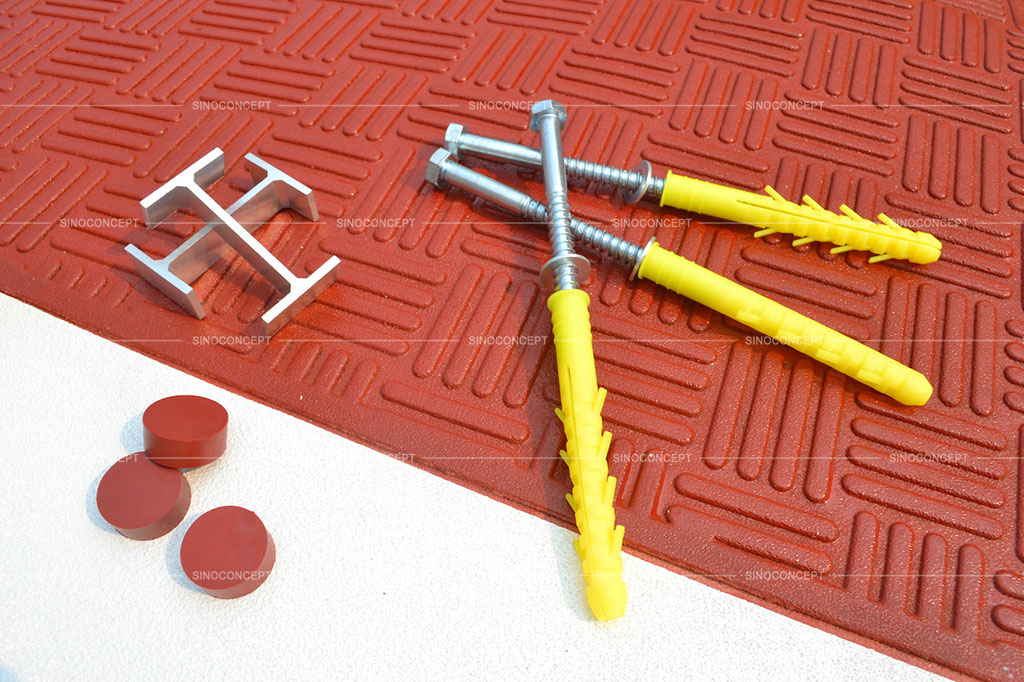
How to install a rubber speed cushion?
Installing speed cushions for calming traffic in high-speed areas like roadways, crosswalks, sidewalks, driveways, school zones, work zones, and public works is necessary to convert these sites into slow zone areas.
Though approval and installation need some time plus effort, ensuring pedestrian safety and preventing fatalities is inevitable.
Similarly, roundabouts, public works, pedestrian zones, unmarked crosswalks, and pedestrian crossings have huge traffic volumes with collision risks, so don’t skip these traffic calming measures and install them as soon as possible.
As speed tables are different in dimensions and design from speed humps, road bumps, speed breakers, and ramps, so is their installation.
So, here are essential tools and materials to install speed cushions:
- Chalk
- Measuring tape
- Hammer drills
- Drill bits
- Drive socket
- Air compressor
- General-purpose hammer
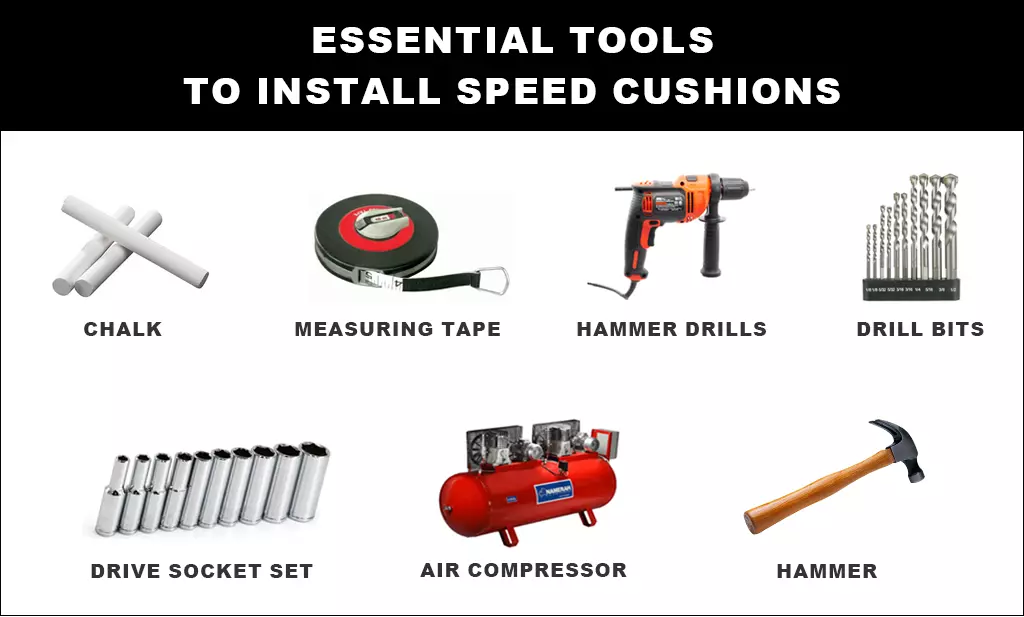
Steps to install rubber speed cushions
See below for details:
1. The first step in installing a rubber speed cushion on the pavement is to clean and dry the surface. Ensure there is no moisture, and remove debris or pebbles with a broom or anything convenient.
2. Next, mark the road with chalk. Markings should be parallel to the curb or road edge.
Similarly, these lines must be at the top and bottom of where the product is to be installed perpendicular to the road. Use these lines to square up the product during installation, and chalk lines must be visual, so the speed cushions touch lies.
3. Identify and separate the speed cushion modules that run parallel to the right or left side of the road and place them on the pavement. There must be parts of each module.
4. Assemble and position the first row of units. Now interlock with the tongue and groove system or use a hammer if necessary.
5. Premark the drill bit 8-9 inches deep, either with paint or tape, then stand on the first corner module and drill holes in the first row using a hammer drill. The holes should be 8 to 9 inches deep to anchor them in the correct position firmly.
6. After drilling holes, use a high-performance air compressor to clear holes in all dust and debris before installing anchors.
7. When this is done, insert 2-3 squirts of adhesive into the holes and then, using a hand-held sledgehammer and anchor tool, insert plastic anchors into the hole until flush.
8. Quickly insert bolt-washer assembly and install using a drill with socket and snug.
9. When the first row is perfectly bolted to the ground, move on to the next row of modules and install likewise.
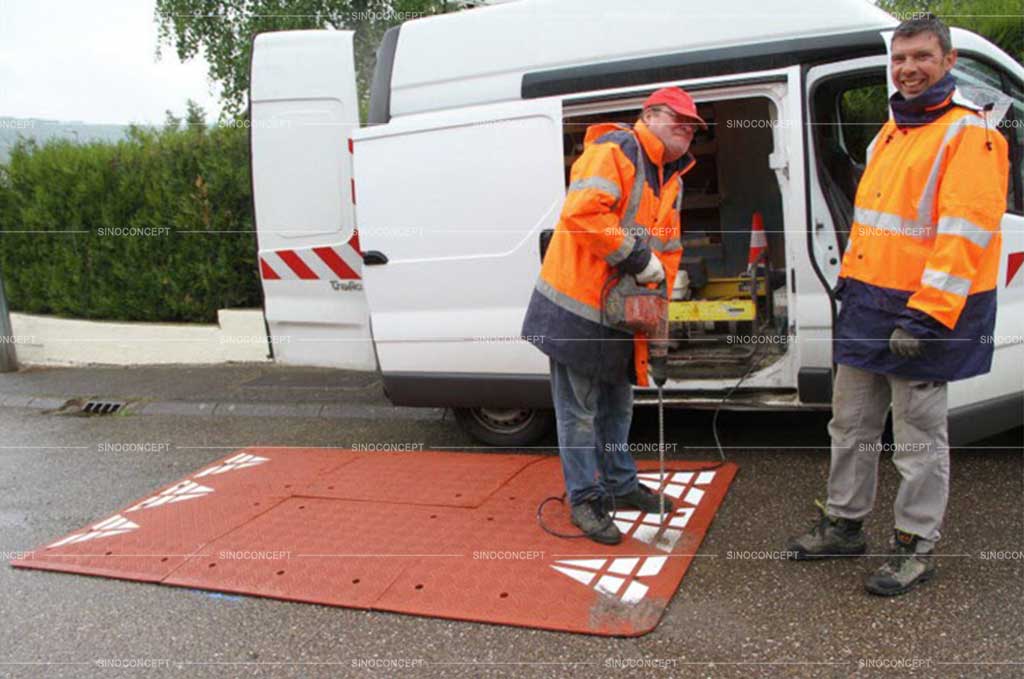
How long does it take to install a speed cushion?
Narrating a fixed time to install a speed cushion is not possible as it depends on multiple factors. Individual handling would take longer than a team of a few members.
So is the variation of tools and their efficiency. Your tool-handling experience also matters to lessen installation time. The speed cushion installation also depends on the road traffic, traffic circles, traffic speed, and traffic lanes to slow speeding traffic.
The speed cushion installation in the city streets, roundabouts, crossings, and pedestrian zones would differ from the federal highway.
Similarly, public works, cut-through roads, road intersections, unmarked crosswalks, or uncontrolled intersections need more traffic safety and high traffic flow, increasing installation time.
The same is the case with highway traffic. However, the Federal Highway Administration uses highway signs and boards for speed reduction, and still plenty of speed delays installation to several days.
You have already read a good part of this article, 👀
We've
got the impression that you like it. 🙂
👇🏻
IF YOU ARE LOOKING TO WORK DIRECTLY WITH A MANUFACTURER,
FEEL FREE TO CONTACT US. WE ARE VERY HAPPY TO HELP!
How much does it cost to install a speed cushion?
The overall cost of speed cushion installation varies depending on the material, the number of speed cushions in a package and other qualities.
You can have asphalt, concrete or recycled rubber speed cushions as per your requirement. All mentioned materials are different and contribute differently to speed limitation.
Additional specifications, including designs and drainage, add value to the cushions and make them slightly high-priced. But these qualities are worth considering.
Some speed cushions produce sound while others absorb without making noise, which is also good for installation in residential areas.
Plus, speed cushions’ percentile, markings, and reflectivity also matter a lot. White arrows and reflective tape make speed cushions highly visible, and drivers can easily access them at the street light.
Always choose speed cushions with good reflectivity and bright colours to make them detectable.
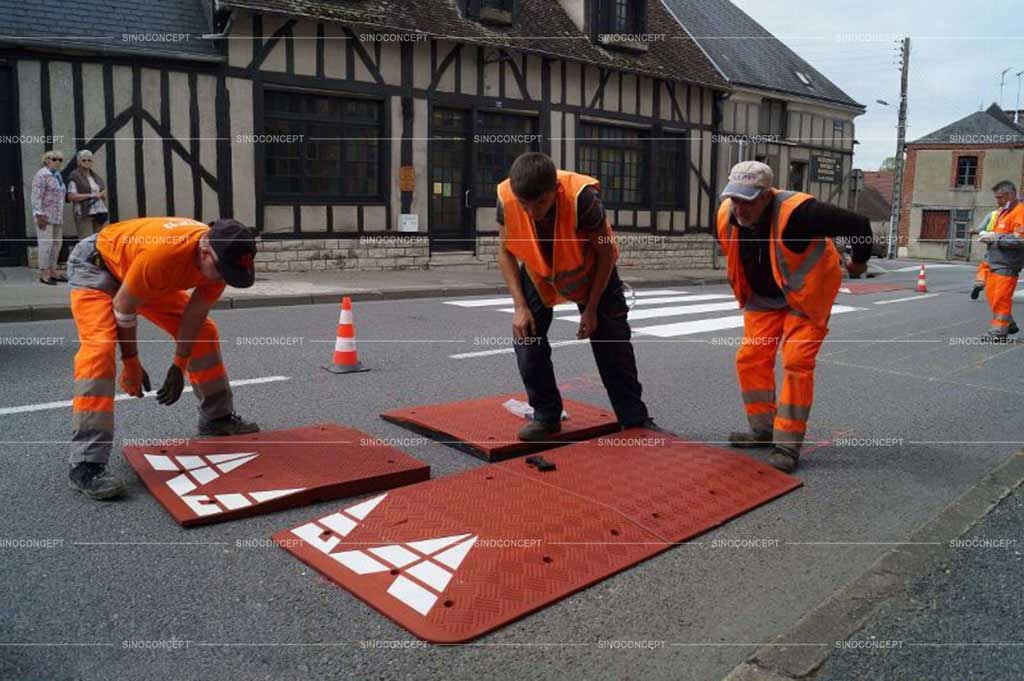
What precautions make speed cushion installation easy?
Wrong speed cushion installation not only ruins your efforts but also causes problems for motorists, bicyclists, buses, cyclists, and heavy vehicular traffic.
The emergency response of ambulances, fire trucks and other emergency vehicles is affected at the same site.
So, take these preventive measures to minimize discomfort and prevent hazards.
- First of all, care for yourself and wear protective glasses to shield your eyes, as drilling concrete can make sores in your eyes.
- Install an odd number of speed cushions based on the driveway width. Start with the centre speed cushion and move outward towards the road edge. It ensures adjacent speed cushions have reasonable spacing and prevents narrowing the walkthrough area.
- Keep marking the road with chalk and remeasure the distance.
- When installing speed cushions on wider roads, pavements, cut-through roads, road intersections, or uncontrolled intersections, always start the installation from the roadway pavement edge to install from the outer road edge toward the centerline. After completing installation at the half road, move from the centerline to the outer road edge.
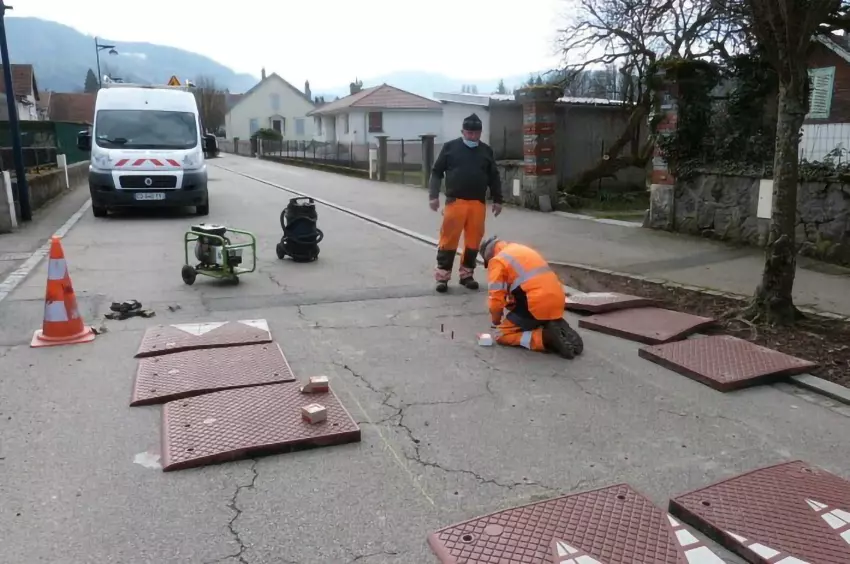
- Whatever side you are working on, don’t forget to use signage, stop signs, speed limit signs, warning signs, street signs, signs and markings to warn pedestrians and oncoming traffic. This gives traffic direction at low speed and helps speeding vehicles to slow down.
- Moisture should not be present in or around rubber speed cushions, making anchor adhesive ineffective.
- Sometimes, the anchor or bolts will not go deep enough into the drilled holes. So, remove materials and again clean the debris. You can remeasure the depth with a bolt and, if needed, drill the holes deeper.
- Don’t overtighten nuts or bolts; bolt heads should always sit below the rubber surface.
- Try to keep drill depth reasonable without making it too deep. Overdrilling would require an additional adhesive mixture.
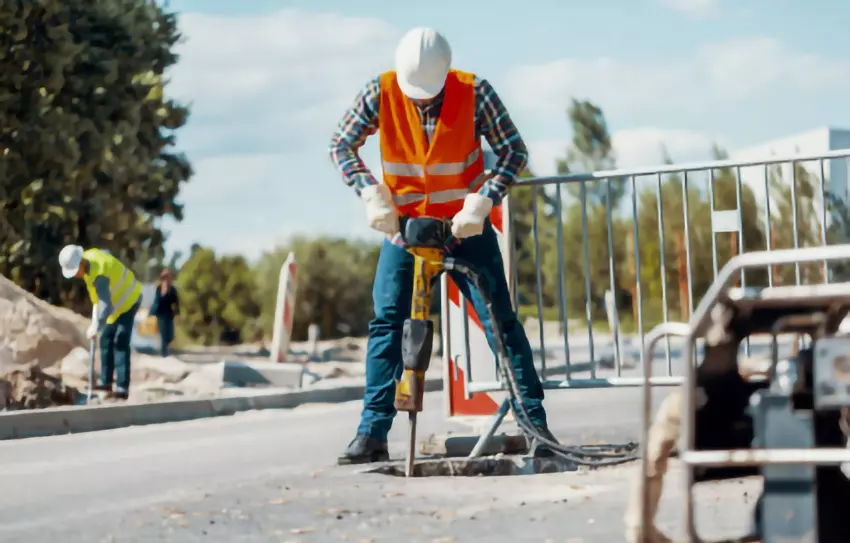
Conclusion
Speed cushions control traffic without hurting passengers and drivers and increase productivity.
When traffic flows smoothly, everyone reaches the destination timely. Above all, the transportation department encourages speed cushions and other traffic calming devices for speed reduction.
If your property has traffic that can put your and others’ lives at risk, contact the local municipalities for approval and install speed cushions, but taking your neighbours’ consent is necessary.
So, do not cross speed, follow traffic rules and contribute to better traffic flow to make roads safe for passengers, drivers, pedestrians and most importantly, children.
👇🏻
IF YOU ARE LOOKING TO WORK DIRECTLY WITH A MANUFACTURER,
FEEL FREE TO CONTACT US. WE ARE VERY HAPPY TO HELP!





















